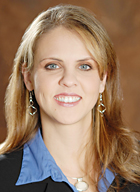
Medical necessity has become a common phrase in healthcare terminology, but what exactly does it mean? Unfortunately, this term has become very subjective and is the primary reason we have been denied payment for services.
So, again, what does it mean? To a clinician, it is the primary reason we are providing our valuable services. To a Medicare reviewer, it is the primary reason he issues for justification of denial of our valuable services. To me, as a clinician, it means the “WHY?” Why does this resident need my services? Why am I the best discipline to provide this service? Why do they have a continued need of my services? Why, why, why?
Why are we not always documenting this? Why do reviewers pick through our documentation and determine there was no need for our service? Why are we continuing to make no changes?
When I teach seminars, I always discuss the importance of strong documentation. But how does documentation transform from weak to strong? Do we even think of our documentation in these terms? I may sound full of rhetoric, but I do have a plan. Document the “WHY”! It’s that easy! No matter what type of clinician we may be, we should always include three main components to our documentation. We have gotten really good and comfortable with documenting two of the three, but the third reason always seems to be hit or miss.
The three components I’m mentioning are What, How, and Why. What did you do with the resident? For example: “Physical therapy had the resident ambulate 100 feet …”. How did the resident perform? “…with a rolling walker and minimal assist.” Unfortunately, many times this is all we document. This does not prove the need for a physical therapy session.
The nursing staff, activities, family, etc. can all walk with this resident with a rolling walker and minimal assist. So, we need the WHY? The WHY should be the reason for ambulating 100 feet. The resident demonstrates issues with activity tolerance, balance, safety, gait deviations, and so on. Maybe you provided less cueing, maybe the resident is making gains with their tolerance. These are all measurable objective areas of function that are needed to ultimately achieve the goals set by the clinician.
There are many templates, software companies, reference books, and so on to provide good learning tools to improve documentation. However, this very basic and simple rule of documenting “What, How, and Why” should allow any clinician with reasoning skills to properly document what the Medicare reviewer is seeking.
Unfortunately, medical necessity is still in the eye of the beholder, but if we can better explain WHY we are providing the services we are, it should decrease the number of denials.
Shelly Mesure (“Measure”), MS, OTR/L, is the president and owner of A Mesured Solution Inc., a rehabilitation management consultancy with clients nationwide. A former corporate and program director for major long-term care providers, she is a much sought after speaker and writer on therapy and reimbursement issues.



